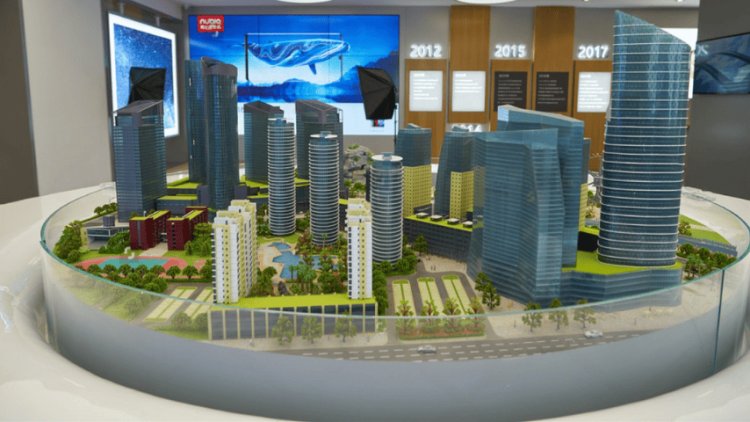Showcasing Cultural Elements in Dubai's Scale Models
Architectural scale models for exhibitions in Dubai are not just tools to showcase buildings but also artistic representations of culture and heritage. Dubai is a city where tradition meets modernity, and this balance is often reflected in real estate developments.

Architectural scale models for exhibitions in Dubai are not just tools to showcase buildings but also artistic representations of culture and heritage. Dubai is a city where tradition meets modernity, and this balance is often reflected in real estate developments.
To appeal to local and international audiences, developers incorporate cultural elements into scale models, making them visually stunning and meaningful. This article delves into how cultural aspects are integrated into architectural scale models for exhibitions in Dubai.
1. Incorporating Traditional Design Motifs
One of the most common ways cultural elements are represented is through traditional design motifs. These patterns and features highlight the region's architectural heritage.
Key Features:
- Mashrabiya Screens: These intricate latticework patterns are often used on building facades or windows. They represent a traditional Middle Eastern design element that balances beauty with functionality.
- Geometric Patterns: Architectural scale models Dubai often feature Islamic geometric art on walls, flooring, or decorative elements.
- Calligraphy: Arabic calligraphy is sometimes integrated into the design to add cultural depth.
Why It’s Important:
These motifs showcase the blending of historical design with modern architecture, a defining feature of Dubai's urban landscape.
2. Highlighting Courtyards and Open Spaces
Traditional Emirati architecture often includes courtyards and open spaces that foster community living. Scale models incorporate these elements to highlight the cultural importance of gathering areas.
Cultural Representation:
- Central courtyards in residential models symbolize community interaction.
- Majlis (traditional gathering spaces) are showcased as part of villas or luxury homes.
- Open spaces with fountains and seating areas reflect hospitality and relaxation.
Example:
Developments like Al Seef and The Old Town integrate these cultural aspects, and their scale models mirror this blend of functionality and tradition.
3. Representation of Landmark Structures
Many scale models for exhibitions in Dubai include iconic cultural landmarks. This representation highlights the project’s proximity to or inspiration from these structures.
Cultural Landmarks Included:
- Burj Al Arab and Burj Khalifa: Symbols of modern Dubai, often featured in surrounding areas.
- Dubai Frame: Highlighted in models to represent cultural heritage and innovation.
- Heritage Sites: Scale models sometimes include replicas of Al Fahidi Historical Neighborhood or Dubai Creek.
Why It Works:
These landmarks anchor the models in Dubai’s cultural and historical context, appealing to local and international buyers.
4. Inclusion of Water Features
Water has deep cultural significance in the Middle East, symbolizing life and prosperity. Scale models often showcase water features to reflect this heritage.
Common Water Features:
- Reflecting pools and fountains inspired by traditional designs.
- Waterways and canals that evoke Dubai Creek’s historical importance.
- Artificial oases that combine tradition with modern luxury.
Example:
Projects like Madinat Jumeirah Living and Dubai Creek Harbour emphasize water features in their scale models to connect with cultural themes.
5. Use of Earthy Tones and Natural Materials
Colors and materials used in scale models often reflect the natural environment and traditional Emirati architecture.
Key Elements:
- Earthy tones like sand, beige, and terracotta represent desert landscapes.
- Materials like stone and wood showcase the use of traditional building materials.
- Texture and finishes mimic the look of historical buildings.
Cultural Significance:
These details create a strong visual connection to the region’s natural and cultural heritage.
6. Celebrating Arabic Hospitality
Dubai’s culture is deeply rooted in hospitality, and scale models often reflect this by emphasizing luxurious and welcoming spaces.
Examples in Scale Models:
- Grand entrances with ornate designs.
- Luxurious hotels and resorts that showcase Arabian hospitality traditions.
- Spaces like gardens, terraces, and lounges designed for comfort and interaction.
Impact:
These elements resonate with the cultural value placed on welcoming guests with generosity and warmth.
7. Integration of Desert and Oasis Themes
The desert plays a significant role in Emirati culture, and scale models often incorporate desert landscapes and oasis-inspired designs.
Key Features in Models:
- Sand dunes recreated with precision around the development.
- Palm trees and desert plants integrated into the landscaping.
- Oases with shaded areas to represent traditional life in the desert.
Example:
Projects like Bab Al Shams Desert Resort highlight these themes in their models, connecting modern luxury with cultural authenticity.
8. Showcasing Sustainability and Heritage
Sustainability has become a cultural value in Dubai, blending modernity with the preservation of heritage. Scale models often reflect eco-friendly initiatives inspired by traditional practices.
Sustainability Representations:
- Wind towers (Barajeel) used for natural ventilation, a nod to historical cooling methods.
- Green roofs and shaded walkways to mimic traditional cooling techniques.
- Solar panels integrated into the design for sustainable energy.
Why It Matters:
These features highlight Dubai’s commitment to merging its past with a sustainable future.
9. Interactive and Storytelling Features
Modern scale models include interactive elements to narrate the cultural story of a project.
Interactive Features:
- Touchscreen displays explaining the cultural inspiration behind the design.
- Augmented reality (AR) that brings cultural elements to life.
- Rotating platforms to give a full view of the model’s cultural details.
Example:
Luxury projects like Museum of the Future use interactive features to tell their cultural and futuristic story.
Conclusion
Architectural scale models for exhibitions in Dubai are rich in cultural details. They reflect the city’s heritage through traditional design motifs, open courtyards, iconic landmarks, and desert-inspired themes. By incorporating cultural elements, these models connect modern developments with the history and identity of Dubai.
These cultural representations not only enhance the aesthetic appeal but also resonate with local values and global audiences. In a city that values innovation and tradition equally, scale models become a medium to showcase this unique blend, ensuring a lasting impression on stakeholders and visitors.
What's Your Reaction?

















.jpg)
.jpg)
